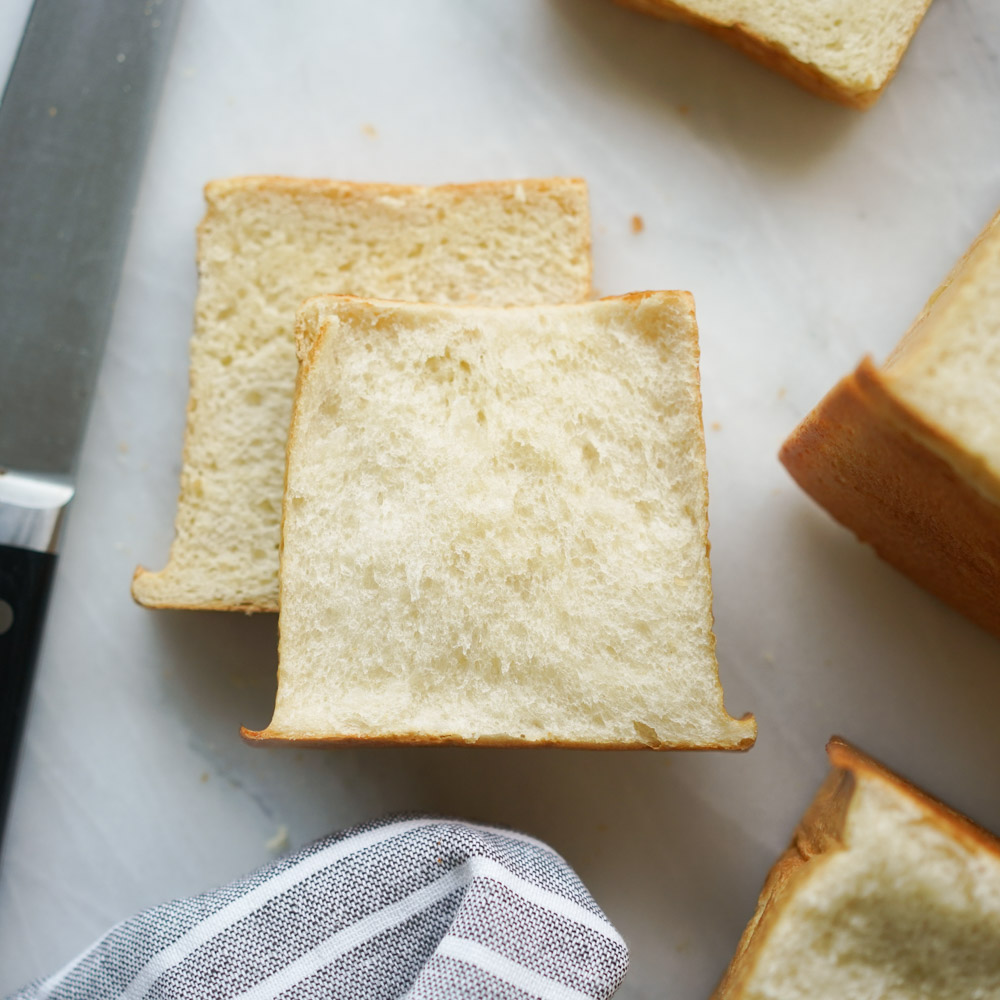Shokupan Recipe (Fluffy Japanese Milk Bread With Tangzhong)
4.8
(5)
Your folders
Your folders
Prep Time: 30 minutes
Cook Time: 20 minutes
Total: 170 minutes
Servings: 1
Cost: $49.46 /serving
Author : Huy Vu

Ingredients
Export 8 ingredients for grocery delivery
Instructions
Step 1
Combine bread flour, water, and milk in an unheated sauce pan. Whisk until fully combined. Place the pan over medium-high heat and bring to a boil.
Step 2
Lower the heat to medium-low and continue to whisk until it becomes a thick pudding.
Step 3
Remove from the heat and transfer to a heat-safe container until cool to the touch, about 10 minutes. See photo for final texture.
Step 4
In a bowl, mix together the egg and whole milk until it’s combined.
Step 5
In a stand mixer with the dough hook attachment (or bowl), stir together the bread flour, yeast, milk powder, sugar, and salt. Pour the egg and milk liquid in the bowl. Finally, add the tangzhong and mix on medium (or level 4-5 on my Kitchen Aid). Continue to mix for about 2 minutes or until the dough forms into a ball.
Step 6
Add butter into the stand mixer and continue to mix at the medium level for 5 to 7 minutes. The dough should fully incorporate the butter and become smooth and elastic. You may need to turn off the machine and use a spatula to scrape down the sides of the bowl to make sure everything gets incorporated. I typically have to do this more than 8 times.
Step 7
Windowpane test: Test the dough for sufficient gluten formation with the windowpane test. Pinch off about 1 teaspoon of dough and slowly stretch it between your pointer fingers, index fingers, and thumbs. Stretch it thin and hold it up to a source of light. If its thin enough to let light through like a “windowpane" without breaking, you've developed enough gluten and can proceed. If the dough breaks or can’t be stretched, continue to knead for another 2 minutes and retry the test. Note: this dough has a stickier consistency, so be careful when stretching.
Step 8
Remove the dough and transfer it onto a clean surface. See photo for how the dough should look right when taken out of the mixer. Form the dough into a smooth ball by encasing the dough in the middle of your hands. Make a heart with your pointer fingers and thumbs, then move your hands and the dough in a circular fashion until it forms a ball.
Step 9
Brush on a small amount of vegetable oil in a mixing bowl to coat the inside of the bowl. Transfer the ball of dough into this bowl and cover with a dishtowel. Leave it in a warm place like by a sunny window (or in an oven that’s turned off) for 1-2 hours or until the dough doubles in size. Note: some newer ovens have a “proofing” setting so this might also work.
Step 10
Check every 30 minutes or so to see if the dough has doubled in size.
Step 11
Once the dough has doubled in size, remove it from the oven, remove the towel, and punch the dough down once to remove excess gas.
Step 12
A single, quick punch will do. Here's how it looks afterwards.
Step 13
Transfer onto a clean surface. Weigh your dough and divide this number by Roll into a large log and cut into 3 equal pieces by weight. You can eyeball it, but it’s extremely difficult and you may end up with a lopsided loaf especially if you’re baking in a pan without a lid. Weighing will ensure your rolls are all the exact same size.
Step 14
Quickly reroll each ball of dough to smooth out the entire surface. Using a claw shape with your hand lets you move it around and control it better without too much sticking. Here's how it should look after rolling.
Step 15
Use a rolling pin to roll out each ball into a square.
Step 16
Fold one corner of the square into the middle and take the opposite corner and fold it towards the center too. Take the corner closest to you and begin rolling the dough upwards until it becomes a jelly roll.
Step 17
Pinch the ends of the dough into itself to seal. Repeat with the other two balls of dough.
Step 18
Butter your pan to prevent the bread from sticking. Place all the pieces of dough into the pan so that they have about ½ an inch of space between them and look like they are horizontally stacked on top of each other.
Step 19
Cover the pan with the dish towel and let it proof once again for about 30-40 minutes or until the tops of the dough is right at the rim of the pan. Then, brush on some milk on the top of the dough.
Step 20
Slide the lid carefully to cover the pan, and remove from the oven. Preheat the oven to 350 °F.
Step 21
When the oven is fully preheated, put the baking pan in and bake for about 20 minutes. Carefully uncover the lid and check if the bread is firm and golden brown (about 210 ° F internally). Remove from the oven and transfer the loaf onto a cooling rack.
Step 22
I like to let the bread rest until it’s cool to the touch before slicing.